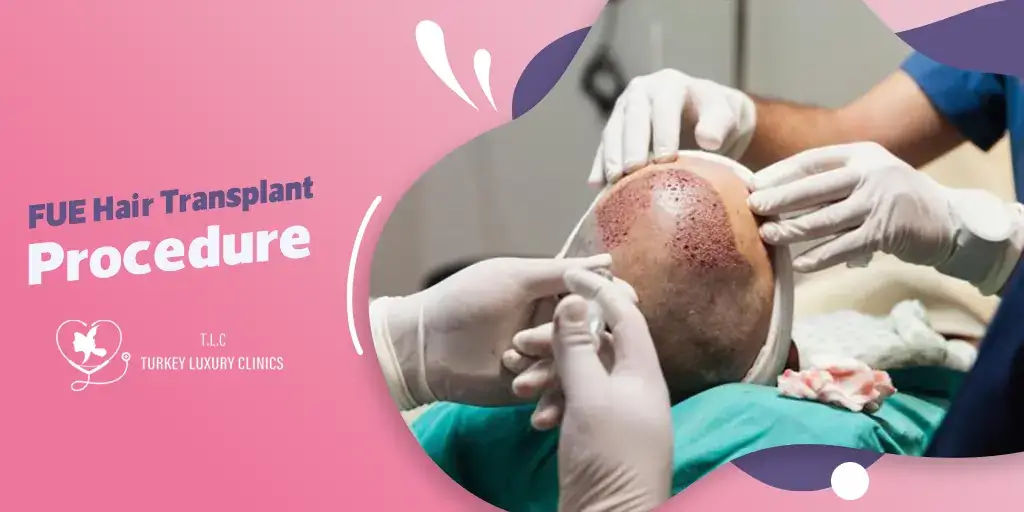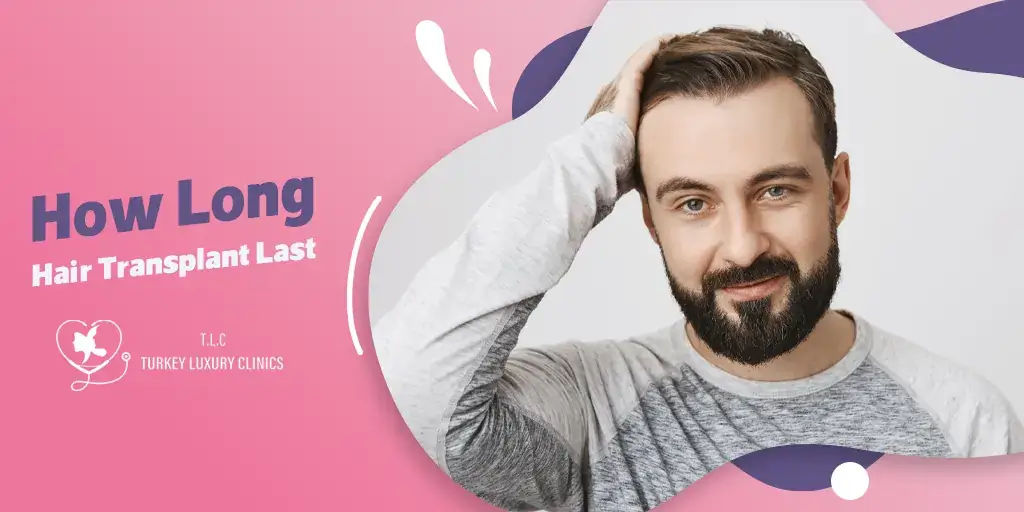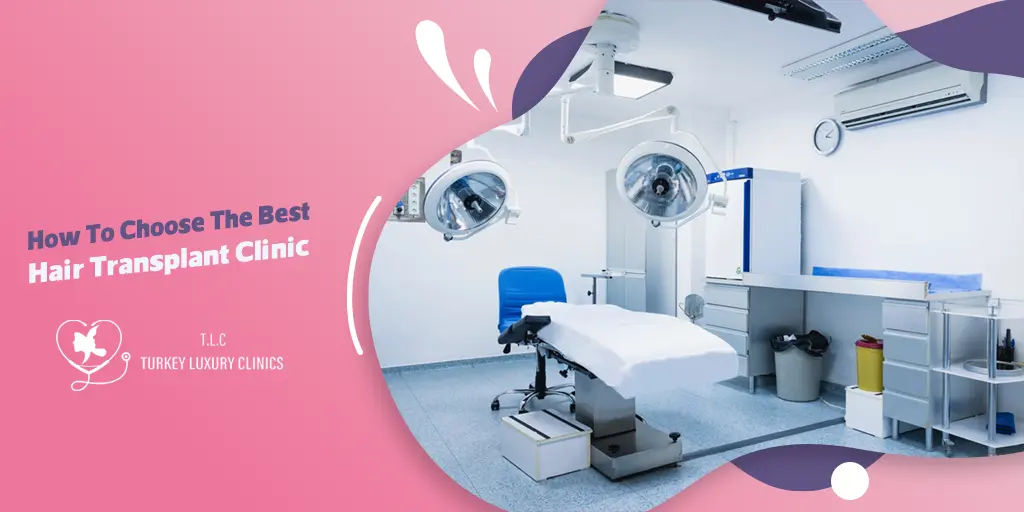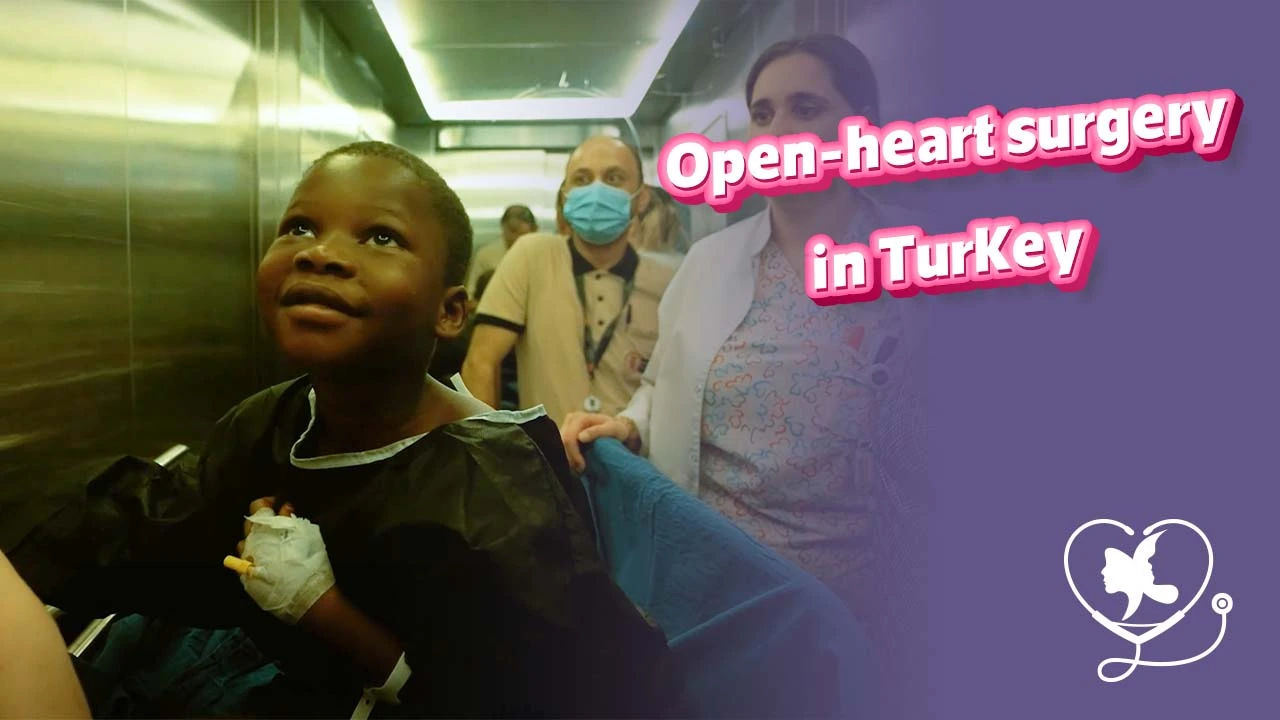- - What Does “Hair Transplant Gone Wrong” Mean?
- - Signs of Hair Transplant Gone Wrong
- - Causes of Hair Transplant Gone Wrong in Turkey?
- - How to Fix it When a Hair Transplant Goes Wrong?
- - How to Avoid Hair Transplant Mistakes in Turkey
- - How to Choose a Trusted Hair Transplant Clinic in Turkey?
- - Book Your Hair Restoration at Turkey Luxury Clinics with Confidence
- - FAQs About Turkey Hair Transplant Gone Wrong
Turkey is home to some of the most experienced hair transplant surgeons in the world, with advanced techniques, cutting-edge devices, and reputable clinics that attract thousands of international patients each year, making it one of the top destinations for hair transplants worldwide
The success rate of hair transplants in Turkey is very high, often exceeding 95% with modern methods. Despite this excellent success rate, it is still probable Turkey hair transplant can sometimes go wrong, resulting in poor cosmetic outcomes or medical complications.
Choosing a reputable, accredited clinic and carefully following aftercare instructions can significantly reduce the risk of a Turkey hair transplant gone wrong.
In this article, Turkey Luxury Clinics guides you through the warning signs, most common causes, and available solutions to fix a bad hair transplant, as well as the key risks to be aware of if complications occur.
What Does “Hair Transplant Gone Wrong” Mean?
A “hair transplant gone wrong” refers to a procedure that delivers unsatisfactory results — such as an unnatural hairline, patchy or uneven hair growth, visible scarring, or complications like infection.
While complications in Turkey are relatively uncommon, they can still occur. A Turkey hair transplant can go wrong due to issues like using unqualified staff, poor hygiene leading to infection, and aggressive "mega-sessions" that overharvest the donor area.
Potential complications include unnatural hairlines, scarring, low graft survival, severe infections, and even scalp necrosis (tissue death).
Fortunately, Turkey’s highly experienced surgeons, advanced technology, and state-of-the-art clinics provide effective solutions to correct bad or failed hair transplants.
Signs of Hair Transplant Gone Wrong
Bad hair transplants can differ in severity, but they generally result in unsatisfactory cosmetic or medical outcomes. These issues can appear during the initial recovery phase or later, typically 3 to 6 months after the procedure, when the transplanted hair begins to grow.
Common signs of a hair transplant gone wrong:
1. Unnatural or poorly designed hairline
A poorly designed hairline can make a transplant look unnatural. It may be too straight or too high, lack natural curves, have grafts placed at wrong angles, or appear clumped due to older techniques using larger grafts.
2. Patchy hair growth
Patchy or uneven growth can result from poor graft placement, over-harvesting of the donor area, or damage to follicles during surgery. An unskilled surgeon or unqualified practitioner may place grafts too far apart, at the wrong angle, or with uneven spacing, leading to a “pluggy” or sparse appearance. Over-harvesting can also create visible gaps or scars in the donor area with no hair regrowth.
3. Visible scar formation with no hair growth
Scar after hair transplant is a natural part of healing, but excessive scarring in the donor or recipient areas can leave visible scars with no hair growth, as hair cannot grow over scar tissue.
The type and visibility of scars depend on the surgical method: FUT leaves a single linear scar, while FUE creates multiple small dot-like scars.
Advanced techniques like DHI and Sapphire significantly reduce scar risk. Surgeon skill, individual healing tendencies, and proper post-operative care also influence scar appearance.
4. Pluggy grafts
With older techniques like FUT or large plug grafts, hair may grow in dense clumps with gaps around them, creating an unnatural “doll-like” appearance. This mistake is uncommon with modern techniques but can still occur when older methods are used by inexperienced surgeons.
5. Wrong hair direction
Hair growing in the wrong direction is usually caused by improper graft placement. When follicles are implanted at an incorrect angle, hair may stick up, lie flat, or grow diagonally, creating an unnatural look that disrupts the overall harmony of the hairline.
6. Medical complications due to a bad hair transplant
- Infections or pus-filled spots around the grafts
- Cysts or bumps beneath the skin in the transplanted zone
- Skin necrosis (dark patches indicating tissue damage)
- Poor or delayed healing compared to the expected recovery timeline
- Persistent redness, swelling, or inflammation beyond the normal healing period
Causes of Hair Transplant Gone Wrong in Turkey?
1. Unlicensed clinics
According to ISHRS reports, around 96% of bad hair transplant in Turkey are linked to black-market clinics. Many people opt for cheap clinics without checking their license, leading to low prices but low quality too.
These centers rely on poorly trained staff, skip safety protocols, and prioritize high patient volume, leading to a high risk of unsatisfactory or even botched results.
2. Unqualified Technicians
Some low-cost clinics rely on unqualified technicians to perform most of the procedures in order to reduce costs. In these clinics, the critical surgical steps often result in unnatural growth patterns, low graft survival, and long-term aesthetic complications.
3. Poor hygiene & sterilization
Some unreliable clinics fail to follow proper hygiene and sterilization protocols required by the Turkish Ministry of Health or international safety standards.
Using unsterilized tools or operating in a non-surgical environment increases the risk of post hair transplant infection and complications that weaken the grafts, cause premature shedding, and lead to patchy or delayed healing.
4. Incorrect Hairline Design
A natural-looking hairline requires precise medical planning based on face shape, age, and future hair loss progression.
When the hair transplant is performed by an inexperienced surgeon or by technicians it can lead to an unnatural hairline.
5. Overharvesting the donor area
When too many grafts are extracted or taken from the wrong donor zones, the scalp can become visibly thinned or permanently depleted.
In severe cases, excessive extraction may even lead to patchiness or necrosis due to poor blood supply.
An experienced surgeon knows how to calculate the safe number of grafts and select the proper extraction pattern to preserve density and avoid long-term donor damage.
6. Incorrect Graft Placement
Incorrect graft placement can make the hair grow in an unnatural pattern, sticking straight up, flat, or in the wrong direction, which destroys the visual harmony of the hairline.
7. Low Graft Survival
Graft survival depends on how carefully the follicles are handled after extraction. If the grafts are kept outside the body for too long, not stored properly in a suitable solution, or handled roughly, a significant portion may die. This leads to patchy or minimal regrowth even if the surgery looked fine initially.
8. Poor Post-Operative Care
Proper aftercare is crucial for success. Excessive touching, scratching, or friction, improper sleeping positions, strenuous activity, or infections can dislodge grafts and hinder healing, potentially causing graft loss or transplant failure.
How to Fix it When a Hair Transplant Goes Wrong?
The most effective way to fix a failed hair transplant is through a corrective revision surgery performed by an experienced specialist.
This typically involves removing poorly placed grafts, redesigning the hairline, redistributing existing follicles, or adding new grafts to restore density and a more natural look.
In milder cases, non-surgical solutions such as scalp micropigmentation (SMP), PRP therapy, or medications can also help improve coverage, strengthen existing hair, or conceal areas of thinning without the need for another surgery.
Common solutions for fixing a failed or unsatisfactory hair transplant in Turkey include:
- Revision Surgery
A hair transplant revision is a corrective surgery to fix unsatisfactory or outdated results from a previous hair transplant
It requires a highly skilled surgeon who can correct misplaced grafts, redesign the hairline, or perform an additional transplant to improve density and achieve a more natural look.
- Scar Repair
Removing scar tissue after hair extraction or grafting is possible by scar revision surgery.This involves removing the existing scar and re-closing the area, which can create a thinner, less noticeable scar.
Scar tissue can disrupt the implanted follicles, so performing a revision hair transplant in these areas is often necessary. Techniques like FUE can correct previous mistakes, increase density, or redistribute grafts for a more natural look.
- Scalp Micropigmentation (SMP)
Alternatively, camouflage techniques such as Scalp Micropigmentation (SMP) offer a non-surgical solution. SMP involves tattooing tiny pigment dots on the scalp to mimic the appearance of hair follicles. This method is particularly useful for masking scars, thinning areas, or patchy results, giving the illusion of fuller hair without the need for additional surgery.
- Platelet-Rich Plasma (PRP) and Medication Therapy
PRP can support healing and stimulate growth in both the transplanted and native hair, improving density and overall outcome. Also, treatments like minoxidil or finasteride may be prescribed to support hair growth, reduce shedding, and strengthen weak follicles.
How to Avoid Hair Transplant Mistakes in Turkey
To avoid a failed hair transplant in Turkey, meticulously research and choose a clinic by verifying surgeon qualifications and clinic credentials, like ISHRS membership and Turkish Ministry of Health licensing
Look for clinics that are accredited and have a board-certified surgeon, has extensive experience and is licensed to practice in Turkey.
1. Research clinics thoroughly: Look for clinics with proper accreditation and experienced, board-certified surgeons.
2. Be wary of red flags: Be cautious of very low prices, remote assessments (without a physical exam), and claims of excessively high success rates.
3. Prioritize safety: Always ensure that a qualified doctor, not an untrained staff member, performs the procedure and that all sanitary and sterilization rules are followed.
4. Document everything: Keep all contracts, receipts, and correspondence in case you need to seek corrective treatment or legal action.
Important articles: Factors Affecting Hair Transplant Results
How to Choose a Trusted Hair Transplant Clinic in Turkey?
Choosing the right clinic is critical because the majority of botched hair transplants in Turkey happen in unlicensed or black-market clinics. An affordable clinic can offer competitive pricing without compromising quality, while a cheap, unqualified clinic often cuts corners on training, equipment, and medical supervision.
Key points to consider:
- Accreditation & Licensing: Ensure the clinic is licensed by Turkish health authorities and follows international safety standards.
- Surgeon Credentials: A qualified, board-certified surgeon should personally handle critical steps like hairline design and graft placement.
- Clinic Transparency: Avoid clinics that guarantee results, offer remote assessments without physical exams, or have extremely low prices.
- Patient Reviews & Before/After Photos: Verified patient experiences and real results help gauge the clinic’s reliability.
- Hygiene & Equipment: The clinic should use modern, sterilized tools and maintain surgical-grade hygiene.
Discover why Turkey has become the top destination in 2025 with the viral Turkey Hair Transplant Plane trend in hair
Book Your Hair Restoration at Turkey Luxury Clinics with Confidence
Thinking about a hair transplant in Turkey and want the best results? At Turkey Luxury Clinics, we guide you through your hair restoration journey with luxurious services, cost-effective packages, and transparent pricing, ensuring honesty and full medical supervision every step of the way.












.webp)
.webp)
.webp)
.webp)

